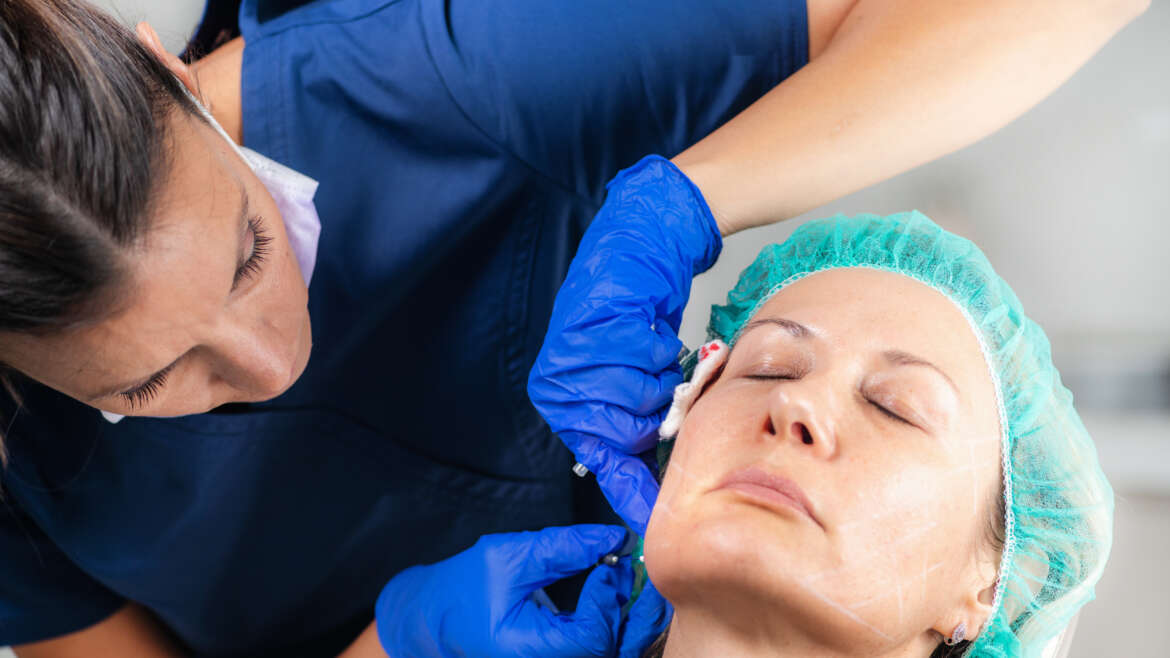Dermal Fillers: The Cost-Effective Non-Surgical to a Younger Look
Introduction
If your facial tissues are thinning out and your cheeks becoming hollow, you are undergoing volume loss.
This is a result of aging.
But don’t worry.
Dermal fillers can replace lost volume to help smoothen the lines that have become more enhanced around the nose and mouth.
More than 1 million men and women annually have chosen this popular facial rejuvenation treatment, which can be a cost-effective way to look younger without surgery or downtime.
But you don’t have to wait for the lines on your face to appear before undergoing a dermal filling treatment. Many dermatologists say that starting relatively young may have benefits. In fact, there is a reported increase in cosmetic surgery or injectable treatments in patients under age 30.
Learn all about injectable filler treatments by reading on.
What Are Dermal Fillers?
Dermal fillers are gel-like substances that are injected beneath the skin
Unlike botulinum toxin, fillers do not reduce the activity of muscles in the face.
While dermal fillers are best known for smoothing out wrinkles, there are other facial issues that dermal fillers can help address:
⦁ It smooths out lines around the nose and mouth.
⦁ It restores volume to sunken cheeks or temples
⦁ It reduces vertical lip lines
⦁ It plumps the lips
⦁ It smoothens chin creases
⦁ It improves symmetry in facial features
Which Filler Should You Use?
With so many dermal filler products on the market, it can be difficult to know which option is best for you without an experienced cosmetic surgeon’s guidance.
Each product is uniquely formulated to have a certain texture, density, and injection depth, which means that certain fillers work better for certain areas of concern.
Make sure that you are receiving FDA approved, brand name fillers, which are available through a licensed physician.
What are Fillers Made of?
There is a variety of FDA approved filler products that cosmetic surgeons use. In general, fillers are categorized by the substance they are made from:
These are:
⦁ Hyaluronic Acid (HA)
⦁ Calcium Hydroxylapatite (CaHA)
⦁ Poly-L-lactic Acid
⦁ Polymethylmethacrylate
⦁ Autologous fat injections (facial fat grafting)
What to Expect During Treatment
Dermal filler injections are non-surgical and typically completed during a visit to the clinic.
The procedure begins with a consultation with your cosmetic surgeon to discuss your medical history, concerns, and expectations.
While the risks associated with dermal fillers are minimal, your medical history should be disclosed to the cosmetic surgeon prior to treatment.
For instance, you need to tell your cosmetic surgeon if you have been taking nonsteroidal anti-inflammatory drugs (NSAIDs) such as ibuprofen, aspirin, and naproxen, or blood thinners, as these drugs may increase the likelihood of bruising.
There are also certain allergies, skin, and neurological conditions that can influence not only the result but also your safety.
Of course, make sure your expectations are realistic.
What to Expect During Treatment
Dermal filler injections are non-surgical and typically completed during a visit to the clinic.
The procedure begins with a consultation with your cosmetic surgeon to discuss your medical history, concerns, and expectations.
While the risks associated with dermal fillers are minimal, your medical history should be disclosed to the cosmetic surgeon prior to treatment.
For instance, you need to tell your cosmetic surgeon if you have been taking nonsteroidal anti-inflammatory drugs (NSAIDs) such as ibuprofen, aspirin, and naproxen, or blood thinners, as these drugs may increase the likelihood of bruising.
There are also certain allergies, skin, and neurological conditions that can influence not only the result but also your safety.
Of course, make sure your expectations are realistic.
The Procedure
Just before the actual treatment, the area will be cleaned, and you may be given a topical anesthetic to numb the area prior to injection. Many filler products also contain lidocaine, a mild anesthetic, which is intended to help minimize discomfort during and after your treatment. Your provider will then inject a precise amount of filler strategically beneath the skin.
Choosing Your Service Provider
Injecting fillers is an art form, so you need someone who skilled in this filed.
Practitioners vary in terms of technique, experience, skill level, and artistry.
Make sure your provider has a proven background in cosmetic medicine as well as training and substantial experience performing filler injections.
Request to see before and after photos of a potential provider’s patients.
If a non-physician will be performing your injections, that person should be working closely under the supervision of a qualified physician.
Even though dermal fillers are available at Medspas, you should see only licensed and trained physicians for any injectable treatment.
Just like any medical procedure, there are risks for infection, discoloration, and lumps if injections are done incorrectly.
How long do dermal fillers last?
The length dermal fillers last would depend on the product, the area of treatment, and the patient.
Generally, the denser the filler is, the more deeply it is injected, and the longer it will last.
If the effects subside, your surgeon would repeat the process and may make adjustments in the amount and technique.
Hyaluronic acid fillers tend to wear out quicker, typically lasting from 6 to 18 months.
Synthetic fillers last longer, as the body does not absorb them. But the patient should be ready to commit to results that would last several years.
Take note that injections to the lips diminish a bit faster than those to the nasolabial folds.
If you decided to undergo facial fat grafting, expect up to 2 weeks of downtime depending on the extent of liposuction performed.
It is usually an outpatient procedure that requires general or local anesthesia with sedation.
Fat injections are meant to last indefinitely, with those transferred under the eyes lasting for at least three years.
Some of the injected fat (around 50 percent) is expected to wear out quickly, which is why the surgeon overfills the treatment area.
Consequently, the initial appearance would be fuller but will gradually settle into a more natural appearance.
Are Dermal Fillers safe?
Although undergoing a dermal filling procedure is safe, there are situations when the injection has to be postponed.
If you’re battling a sinus infection, it’s best to hold off, as any infection in the facial area could spread to the injection site.
It’s also best to postpone if you if are pregnant or breastfeeding.
While there are no case reports of any adverse reaction or complications to patients who received dermal fillers while pregnant, there is likewise no clinical evidence to support that dermal fillers are safe during pregnancy or breastfeeding.
Also, avoid getting a filler before a dental procedure, like teeth cleaning. The pressure and stretching done of the face during dental procedures could misplace fillers.
How much do dermal fillers cost?
If you’re being charged way below the standard rates, better think twice.
There are counterfeit and diluted fillers on the market, so be sure that you only get the real thing.
Please Click here For price information
What are the side effects of facial fillers?
Some patients experience temporary mild bruising and swelling, which subsides days after the treatment.
You could go back to your usual routine right after treatment, although you may be asked to take the day off from strenuous activities.
What if I Don’t Like My Fillers?
The best part of the procedure is looking at the mirror and being happy with what you see.
But in case you’re unhappy with the way filler looks, don’t panic—in most cases, you can have it adjusted. A dermatologist might inject additional filler for balance, or she can dissolve it altogether.
Frequently Asked Questions
Dermal fillers are small injections of gel, typically made up of hylauronic acid, that fill in wrinkles and add volume to soft tissue. You can have dermal fillers in different parts of your face: around the eye, cheeks, mouth and jawline, as well as lip fillers administered directly into the lip tissue.
Fillers basically restore lost volume to your face and plump areas, so that deep set lines are smoothed.
‘It’s easy for clients to confuse side effects to reactions, so it’s extremely important to understand what side effects can be expected,’ says Dr Loong. ‘Temporary side effects – those that are completely normal after facial injections – can include; swelling, redness and tenderness.
Yes there is 100% a difference between Botox and fillers. Botox stops the small muscles in your face from making the movements that cause wrinkles, whilst dermal fillers plump from below the wrinkle to smooth them out and promote the youthful look.
‘It’s easy for clients to confuse side effects to reactions, so it’s extremely important to understand what side effects can be expected,’ says Dr Loong. ‘Temporary side effects – those that are completely normal after facial injections – can include; swelling, redness and tenderness.





